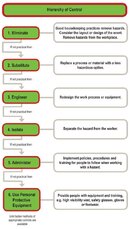A small handful of years ago a member of one the dive clubs I was apart of passed out underwater due to a panic attack while struggling to ascend. One of the dump valves on her bcd had unscrewed to the point it would not seal and she could not establish enough bouyancy to get off the bottom. I would not doubt she was over-weighted as well as she was a relatively new diver. A rescue was effected and she was taken to a local hospital for evaluation. In the end she survived the incident without injury.
About a year and half ago I was recounting the story while standing on a pool deck to an instructor in another club and suggested that he include teaching students to check their dump valves are secured properly as part of their buddy check and stated that I dont think people check them often/often enough...he began to dismiss the idea argumentatively and while doing so I reached out and checked his valve fittings and to his surprise, all of them were loose. He apologized and agreed it is something that should be taught.
Murphy's Law: What can go wrong, will go wrong.
-Z
About a year and half ago I was recounting the story while standing on a pool deck to an instructor in another club and suggested that he include teaching students to check their dump valves are secured properly as part of their buddy check and stated that I dont think people check them often/often enough...he began to dismiss the idea argumentatively and while doing so I reached out and checked his valve fittings and to his surprise, all of them were loose. He apologized and agreed it is something that should be taught.
Murphy's Law: What can go wrong, will go wrong.
-Z





